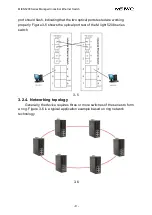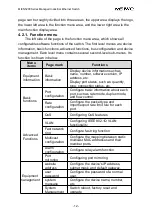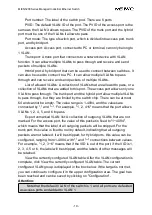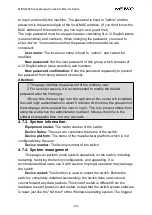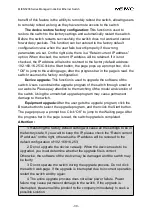
MIEN5208 Series Managed Industrial Ethernet Switch
- 23 -
mirroring, which copies packets from multiple ports to one monitoring port. You
can also specify the direction of the monitored packets, such as monitoring
only the packets sent by the specified port.
Port mirroring:
Enable or disable port mirroring, which is disabled by
default.
Mirror mode:
refers to the direction of data acquisition, whether it is
import or export data, or all data. The concept of in and out is defined for the
mirrored port, not from the perspective of the mirror port.
Mirrored port:
refers to the port where data is collected. The function of
mirroring means that the port for sending and receiving data will be copied, and
several ports can be set.
Mirror port:
refers to the port that collects data. The function of mirroring
refers to collecting the data of the port being copied. Only one can be selected,
that is, only one mirror port can exist at the same time.
Attention:
1. This function must be turned off during normal use, otherwise all
port-based advanced management functions will not work properly.
2. The mirroring function only processes normal FCS packets and
cannot handle various erroneous data frames.
3.The direction of data acquisition is whether to import or export data, or
all data. The concept of in and out is defined for the collection port, not from
the perspective of the mirror port.
4.6.7. Port aggregation
Port aggregation combines multiple physical ports into one logical path,
increasing the bandwidth of the switch. Moreover, the data can also be
transmitted simultaneously via multiple physical links that are bound, so that
the link has redundancy. When the network fails or other reasons cause one or
more of the links to be disconnected, the remaining links can continue to work.
The unit supports up to three aggregation groups, and each aggregation
group supports up to four ports.
Attention:
You must ensure that the attributes of the ports that join the same
aggregation group are the same, including the rate, duplex mode, and so on.
4.6.8. Rapid spanning tree
Spanning Tree Protocol (STP) introduction:
Spanning Tree Protocol is a layer 2 management protocol, which
eliminates the network by selectively blocking redundant network links.
The purpose of network layer 2 loop, while having the backup function of

